|
The 2022 AP US History Free-Response Questions have been released to the public! Click here to view the questions on the College Board's website. 2022 APUSH SAQ Sample ResponsesClick here to view my sample responses to the 2022 APUSH SAQ items. 2022 APUSH DBQ Sample Response(s)Click here to view my sample response(s) to the 2022 APUSH DBQ. This file will be updated to include several sample responses that would earn different point values. 2022 APUSH LEQ Sample ResponsesThis year's LEQ 2 asked students to assess the relative importance of causes for the settlement of the British colonies. Click here to see a set of sample responses I've put together for LEQ 2. Take a look at my analysis of the 2022 APUSH Free-Response Questions on Marco Learning's YouTube channel:
0 Comments
In order to provide further clarity, I have created a set of sample essays in response to an LEQ prompt comparing the Italian and the Northern Renaissance. Each sample essay includes a detailed explanation of how each point has been earned. Included in the packet are one essay that would receive a maximum score and three essays that would receive middling scores that would put a student on the path to passing an exam. This set of sample responses is completely free, but please consider supporting my annual 8 Month Writing Clinic if you would like to see more sample essays like this. The 8 Month Writing Clinic is a subscription-based course that provides teachers and students with videos, sample essays, and other resources to help prepare for the writing sections of the AP US History, AP European History, and AP World History exams. If you are a teacher who has participated in a recent AP Euro Reading, your feedback is always appreciated if you take issue with how I have awarded any of the points, please don't hesitate to contact me. Teachers with questions are more than welcome to contact me with questions, as well.
Click here to view and print these lecture notes in PDF format. The year was 1527, and Pope Clement VII had made a big mistake. He had formed the League of Cognac, allying with France in hopes of driving Charles V, Holy Roman Emperor, out of Northern Italy. His gamble had not paid off, and the troops of the Holy Roman Empire had scaled the walls of Rome. After a decisive victory over the French, the poorly-paid imperial troops had mutinied and demanded to march on Rome, where they could be paid in plunder. And plunder they did. Once inside the city, imperial troops abandoned all discipline and killed thousands. Many of those who survived fled the city and Clement only survived thanks to a heroic stand of his Swiss Guards. Rome, formerly a city of over 50,000 inhabitants, was reduced to 10,000 residents by the time imperial troops finally had their fill and abandoned the city eight month later. The Sack of Rome taught Pope Clement a valuable lesson about the consequences of challenging the most powerful man in Europe, but a high price had been paid for his foolishness. The papacy would never regain command the glory and prestige that it once had. At the height of the Renaissance, Rome had been a center of cultural achievement. Not anymore. The year was 1527, and the High Renaissance was over. As Rome was being sacked, an artistic movement was already developing that challenged the conventions of Renaissance art with its insistence on perfect symmetry, proportion, grace, and stability. The masters of the High Renaissance had produced works that so thoroughly perfected this ideal that there was nothing left that anyone could do to rival their achievements while playing by the same rules. Even Michelangelo, the only great master of the High Renaissance who was still alive after the Sack of Rome, took his later work in a different direction. While not altogether different from the art of the High Renaissance, a new “manner” is noticeable enough in these works to give the works of the “Silver Age” of Late Renaissance art its own name. Art historians have chosen to call it Mannerism.
Michelangelo’s work had always portrayed a sense of awe and grandeur, a quality that contemporary Italian observers referred to as terribilità (terror), but the works he produced at the peak of his career balanced this with a sense of grace. His later work brought this terribilità quality to the forefront, as is seen in The Last Judgment. One does not look at this painting and think first that it is beautiful, but awe-inspiring and disturbing. Immediately, the painting was criticized for the over-muscled figures, the predominance of nudity beyond what was considered tasteful (especially for a church altar), and the incorporation of pagan themes. The suffering of the damned is portrayed with vivid emotion beyond the acceptable conventions of Renaissance art. The massive work appeared to exhaust the artist, as he chose to portray himself in the painting as the flayed St. Bartholomew. Michelangelo’s final paintings, The Conversion of Saul and The Crucifixion of St. Peter throw grace and symmetry out the window in order to fully capture vividly emotional and intense scenes from Christian history. His portrayal of Jesus in The Conversion of Saul appears in force like a modern video game character on the attack, confronting Saul with wrath in a scene of pure chaos. These final works did not gain a lot of praise at the time and rarely come up today in a discussion of Michelangelo’s work. Michelangelo is remembered first and foremost for the works he produced in his younger years as a master of the High Renaissance. As Michelangelo, in his later years, was rejecting the constraints of Renaissance conventions, younger artists were also choosing to experiment with new techniques rather than try to compete with the likes of Raphael and da Vinci. One of these younger artists, Girolamo Francesco Maria Mazzola, better known as Parmigianino (the Little One from Parma), showed an early interest in using art to portray an augmented reality. Even before the Sack of Rome, he was experimenting with new approaches. As a young man, he painted at Self-portrait in a Convex Mirror, an outside the box idea at a time when artists were obsessed with idealized realistic proportions. Parmigianino’s Conversion of St. Paul, completed over a decade before Michelangelo’s painting of the same subject, shows Paul unbalanced and in a state of fearful awe. In The Vision of St. Jerome, the central figure of John the Baptist shows a striking contrast to da Vinci’s. While da Vinci’s John the Baptist is idealized, with smooth skin and a straight finger, Parmigianino presents the Baptist as elongated, with blemishes on his skin and an elongated, crooked finger pointing to the Christ Child. 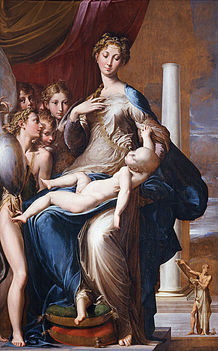 Parmigianino’s Madonna with the Long Neck is, perhaps, the most iconic Mannerist painting, presenting several challenges to traditional Renaissance conventions while not abandoning the style, altogether. The Madonna’s neck is elongated to give her a swanlike elegance, while the Christ-child, also elongated, rests precariously on her lap as if He could fall at any moment. Not only is the Christ-child imbalanced, but all of the admiring angels stand on the same side of the Madonna in a rejection of Renaissance symmetry. The Madonna’s foot is perched awkwardly on a cushion and projects outward, seemingly jutting out of the canvas. In this series of subtle challenges to the strict artistic standards of the Renaissance, Parmigianino and other Mannerist painters established themselves as “the first ‘modern’ artists” in the words of E.H. Gombrich, author of The Story of Art. Late Mannerism is most apparent in the paintings of Doménikos Theotokópoulos, better known as El Greco (the Greek). El Greco was born on Crete and distinguished himself as a painter in Western Europe, first in Rome and then in Spain, where he produced his best-known works. Like Parmigianino, he preferred elongated figures, as can be seen in his painting of St. Andrew and St. Francis, but his works show even more independence from the traditional Renaissance style. His painting of Laocoön, with its elongated and vulnerable figures fearfully succumbing to snakes sent by the gods, contrasts powerfully with a Greco-Roman sculpture of the same event, which features more powerful and idealized forms. El Greco’s most famous painting, The Burial of the Count of Orgaz, provides something of a foreshadowing of the Baroque style, projecting the grandeur of the Catholic Faith in his portrayal of the legendary account of the Count of Orgaz being buried personally by St. Stephen and St. Augustine. Unlike Michelangelo’s Last Judgment, the painting is faithful to Catholic doctrine and is devoid of pagan elements. The painting also shows Byzantine influences that were present in El Greco’s works, showing both a heavenly and earthly plane, similar to traditional Byzantine icons of the Dormition of the Mother of God. El Greco’s works are widely praised for their originality as being ahead of their time. His later works, such as View of Toledo and The Opening of the Fifth Seal, could easily be mistaken for twentieth century art by a casual observer. His work is believed to have had a powerful influence on several modern artists. The Mannerists, in their willingness to challenge prevailing artistic conventions, will forever live as examples to anyone seeking to produce something new and original. Mannerism is mentioned in AP European History Key Concept 1.1, which states, "Mannerist and Baroque artists employed distortion, drama, and illusion in their work. Monarchies, city-states, and the church commissioned these works as a means of promoting their own stature and power." El Greco is mentioned as an illustrative example, but students may use examples from Michelangelo, Parmigianino, and other Mannerist painters when presenting original evidence for free response items.
At the turn of the seventeenth century, European monarchs began to consolidate power, undermining old feudal institutions, such as representative bodies and the nobility, in order to establish absolute rule. This radical centralization of government power required a philosophical foundation to justify it. Jacques Bossuet, a Catholic bishop who was Louis XIV’s court preacher, provided this foundation in Politics Derived from Sacred Scripture, in which he laid out the doctrine of the Divine Right of Kings. Bossuet used Scripture to justify royal authority without checks and balances, claiming that God has placed kings on their throne and it is the responsibility of the people to obey divinely appointed authorities without question. Rebellion against the king is rebellion against God. James I of England (and VI of Scotland) was an advocate of the Divine Right of Kings and published some of his own texts about the subject, which he shared with his son, Charles I. According to James, while a king could not be limited in his authority by the people, a king would be called upon to account for his actions at the Last Judgment. With this in mind, Christian kings were expected to conduct themselves with the fear of God, acting as “God’s lieutenants” on earth. Louis XIV of France was another advocate of the Divine Right of Kings. His decision to rescind the Edict of Nantes, which had granted limited toleration to French Protestants, was partly an attempt to fulfill his obligations as a divine right monarch. He did not want to hear from Jesus, “Louis, why did you allow your people to practice a false religion?”
A great deal of the evidence that Locke used was from the Bible, arguing that people had the right to form governments by virtue of their common descent from Adam. Thomas Paine, in an effort to encourage American colonists to sever ties with the British monarchy, referenced anti-monarchy passages from the Bible in Common Sense. Both Locke and Paine used ideas from Enlightenment philosophy in order to argue against divine right monarchy. Enlightenment philosophers valued rational thinking and did not place the same weight on sacred texts, such as the Bible, as a foundation for arguments. Of course, both still used the Bible in their works – Locke because he was a Christian writing in the seventeenth century, and Paine because he knew that references to the Bible would be seen as credible by his audience. In Western Europe, divine right absolutism did not survive the Enlightenment era. In England and Scotland, the Glorious Revolution of 1688 obliged the monarch to share power with Parliament. The French Revolution saw the abolition of the French monarchy, although it returned in various forms in the nineteenth century. In Central and Eastern Europe, “enlightened absolutists” continued to wield absolute power but attempted to do so according to Enlightened ideals. This content aligns with Key Concept 2.1 in the AP European History Course Description.
BackgroundMartin Luther’s Reformation sharply divided German princes within the Holy Roman Empire, leading to conflict between the Catholic Hapsburg emperors and the princes (primarily in the northern part of the Empire) who adopted Lutheran Protestantism. This led to several conflicts that ended with the Peace of Augsburg (1555), which established the principle of cuius regio, eius religio (whoever reigns, his religion) within the Holy Roman Empire. According to the terms of the Peace of Augsburg, the Holy Roman Emperor renounced the right to enforce a single religion throughout the “Empire” and each prince could choose between establishing Catholicism or Lutheranism in the lands under his own control.
The Thirty Years’ War began as a local religious conflict between the Catholic Holy Roman Emperor and his Protestant subjects in Bohemia, but grew into a continent-wide political conflict over the Balance of Power in Europe. The Four PhasesThe Bohemian Phase
The Danish Phase
The Danish Phase concluded with the Catholics again firmly in the lead. In 1629, Ferdinand issued the Edict of Restitution, which ordered the return of Catholic lands that had been taken over by Protestants since the Peace of Augsburg. The Swedish Phase
The Swedes were helped by financial support from the French, who decided to support the Protestant faction in spite of France being a Catholic country. Cardinal Richelieu, the First Minister of France, was a politique in the vein of Henry IV, caring more about weakening the Hapsburgs than about what religion people professed in the Holy Roman Empire.
The French PhaseGustavus Adolphus was killed in battle in 1632, ending Sweden’s active leadership in the Protestant cause. In the last phase of the Thirty Years’ War, the most dominant player on the Protestant side was Catholic France. Granted, the French had a bit of help from the Swedes, who had switched roles from fighter to financier. Here’s a device for remembering the roles of the Swedes and the French during the later phases of the Thirty Years’ War:
The Peace of Westphalia (1648)The last phase of the Thirty Years’ War was the bloodiest and failed to produce a decisive result. After thirty years, people were weary of war and had lost track of why they were even fighting. The warring parties gathered at Westphalia to hammer out a rational peace to end a long war that had begun as a local religious conflict.
Calvinism was accepted as a third option for princes in the Holy Roman Empire to choose as an official religion and the freedom of private worship for religious minorities within the principalities of the Empire was guaranteed. The goal here was to avoid future religious conflict. The Thirty Years’ War was the last major religious war in Europe and put an end to the violence accompanying the Protestant Reformation.
|
Tom RicheyI teach history and government Archives
May 2023
Categories
All
|





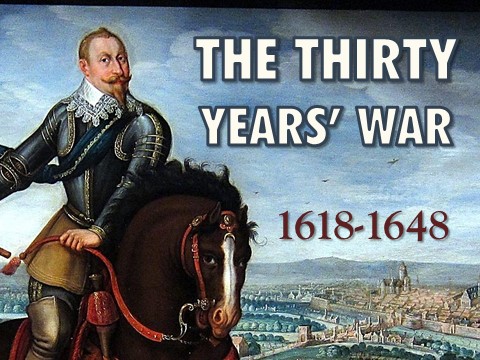
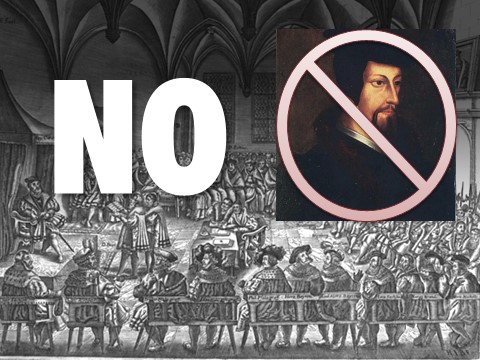
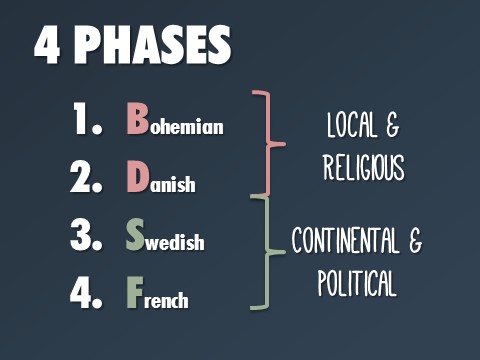
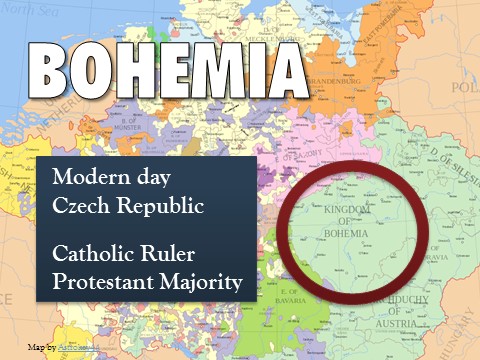
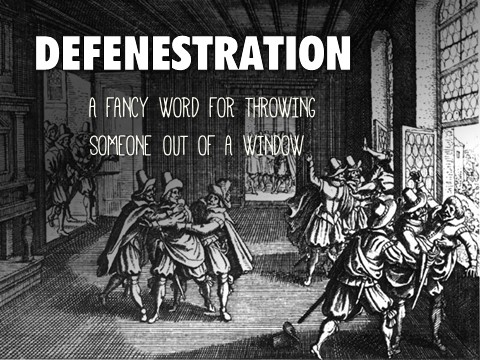
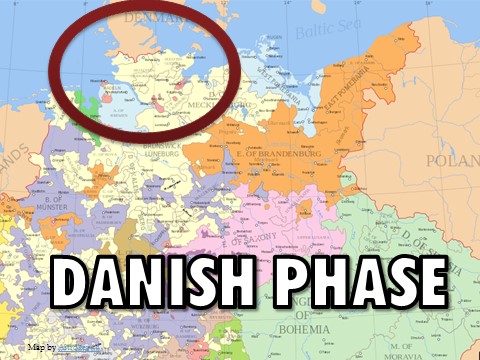
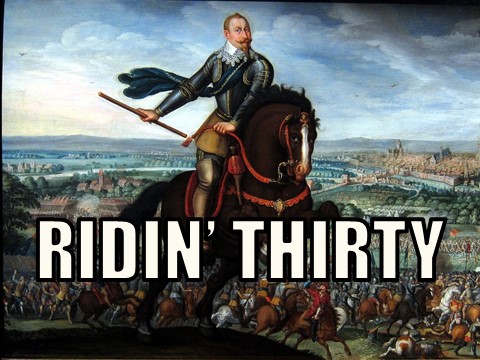
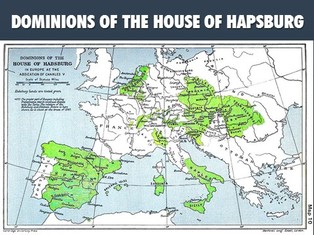
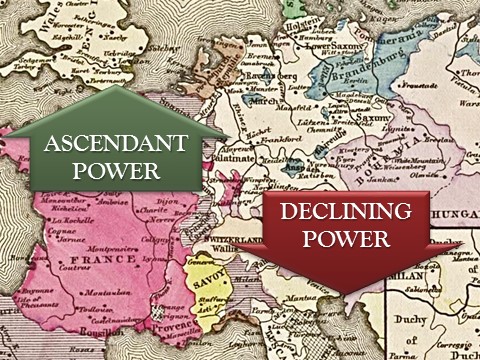

 RSS Feed
RSS Feed